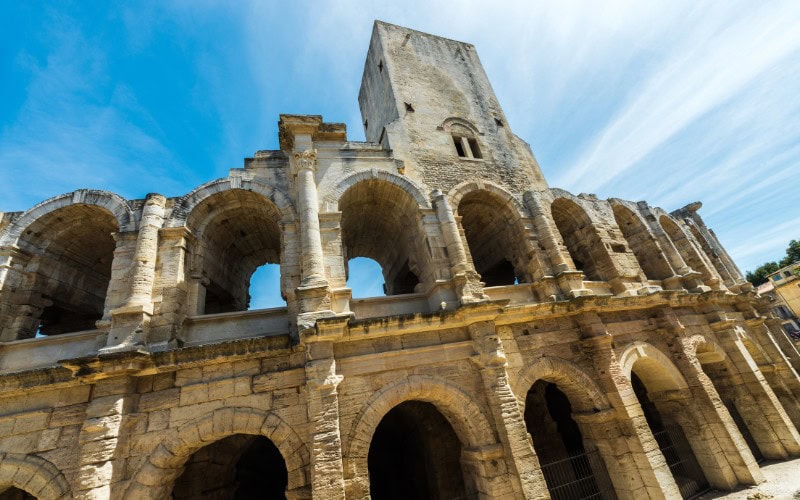Arles for Art Lovers: Van Gogh’s Legacy Lives On
Artsy Traveler contains affiliate links for products and services I personally use and can happily recommend. As an Amazon Associate, I earn from qualifying purchases. Please read the Disclosure for more information. If you make a purchase through these links, at no additional cost to you, Artsy Traveler earns a small commission. Thank you!
Guest Post by Jackie Lapin from The Historic Traveler
When Vincent Van Gogh left behind the bustling energy of Paris in search of tranquility, warmth, and brighter landscapes, he found his muse in the charming city of Arles, France.
Arriving in February 1888, he immersed himself in the vibrant surroundings, creating over 300 paintings and drawings—including some of his most famous works: The Night Café, The Yellow Room, Starry Night Over the Rhône, and L’Arlésienne.
Arles was also where Van Gogh invited fellow artist Paul Gauguin to join him, though their collaboration ended in a bitter falling-out. It was in this very city that his struggles with mental illness escalated, leading to the infamous incident where he cut off his ear.
Arles Before Van Gogh
Long before Van Gogh’s time, Arles was already a city of immense cultural and historical significance. Nestled in the wetlands of the Camargue and bordered by two branches of the Rhône River, Arles played a vital role in ancient Rome.
Its prominence soared after it supported Julius Caesar against Pompey, the latter backed by Arles’ rival, Massalia (modern-day Marseille). As Massalia declined, Arles flourished. The Romans constructed a canal linking the city to the Mediterranean in 104 AD, facilitating trade and military expansion. By the 4th century, Arles had become a key military headquarters for Roman campaigns across Europe, boasting a population of up to 100,000.
Through the centuries, Arles saw the rise and fall of various rulers, from the Christian Visigoths who ousted the Romans to the Saracens and Vikings who later raided the city. Eventually, it became part of France, developing into a major center of Catholic influence in what was then part of Provence.
Exploring Arles’s Rich Roman Heritage
A visit to Arles is a journey through time, beginning with its remarkably preserved Roman structures. One of the city’s most impressive landmarks is the Arles Amphitheatre, a grand Roman arena still in use today.
This UNESCO World Heritage site once held 20,000 spectators, cheering on charioteers and gladiators. Remarkably, in the post-Roman era, the town’s population shrank so drastically that people lived inside the arena itself, fortifying it with defensive towers. Today, visitors can witness bullfights, theatrical performances, and concerts within its ancient walls.
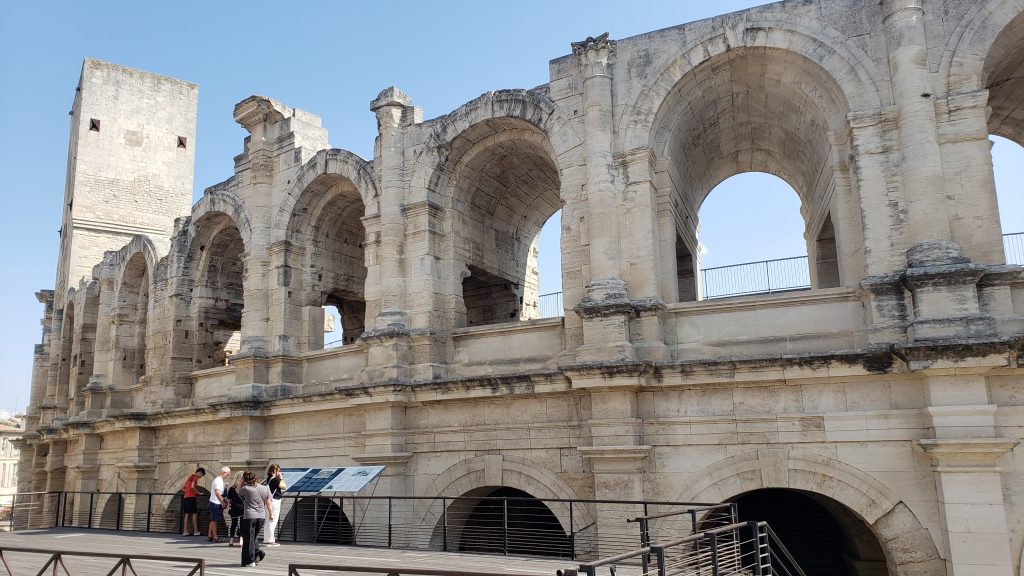
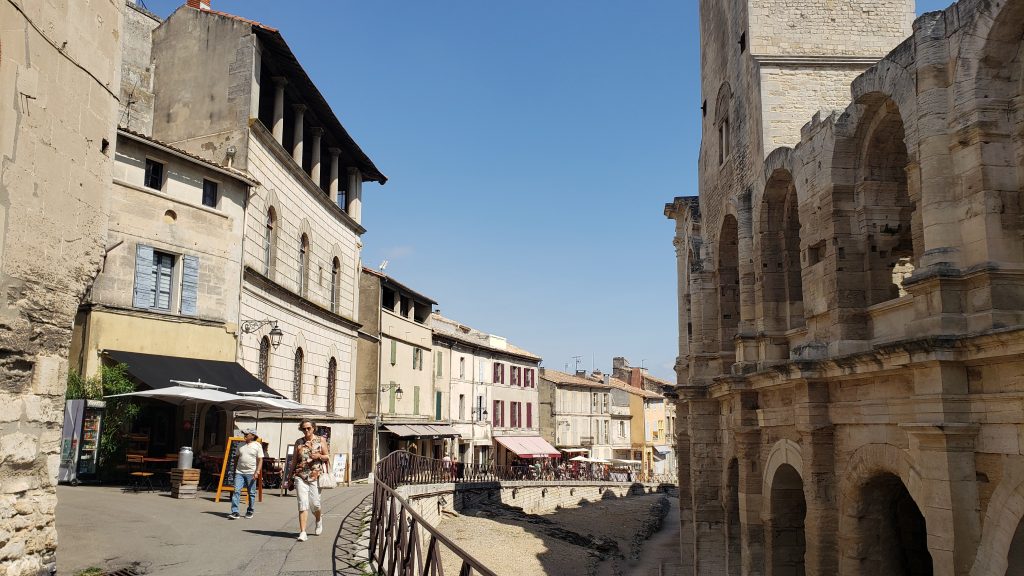
Nearby, the Roman Theatre of Arles, built in the 1st century under Emperor Augustus, once seated 8,000 spectators. Though time has eroded parts of its grandeur, remnants of the stage, orchestra, and seating area endure. It was here that the famed Venus of Arles statue was discovered in 1651.
Enjoying this post? Subscribe to Artsy Traveler to Receive Valuable Travel Tips and Your FREE Guide: 25 Must-Do Artsy Traveler Experiences in Europe for 2025

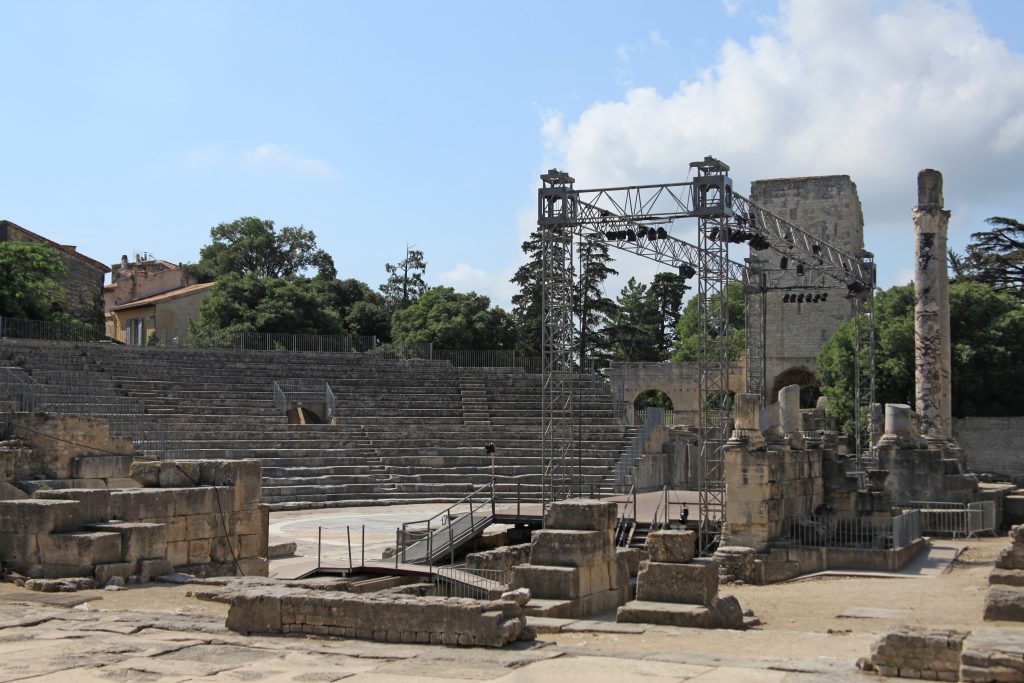
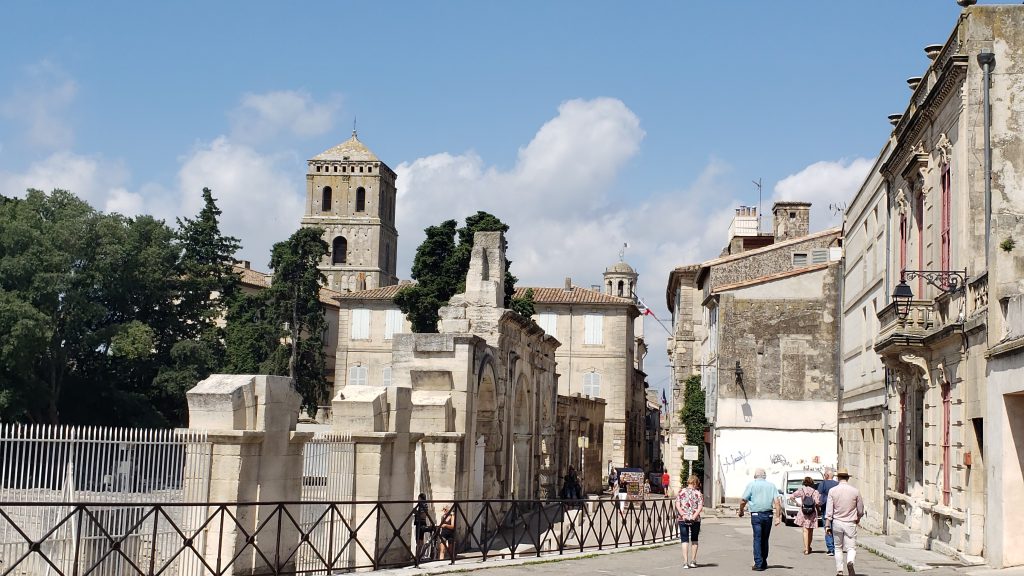
Other Roman relics include the Alyscamps Necropolis, an ancient burial site just beyond the city which also inspired some of Van Gogh’s works, as well as a well-preserved aqueduct, a historic bathhouse, and the 4th-century Roman Obelisk, which still stands at the center of the Place de la République.
The Heart of Old Arles
The Place de la République serves as the historic center of Arles. Here, the Hôtel de Ville (Town Hall) showcases exquisite classical architecture, while the Basilica of Saint-Trophime impresses with its intricate Romanesque carvings.
The adjacent cloister adds to the city’s medieval charm, and on special occasions and Sundays, locals in traditional Provençal attire gather at the church for cultural celebrations and weddings in traditional costume.
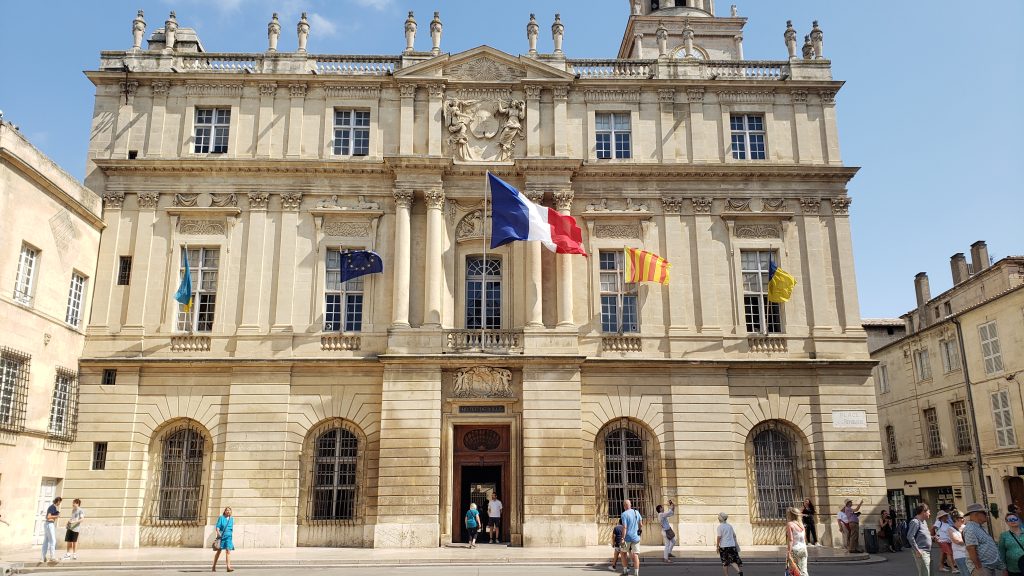
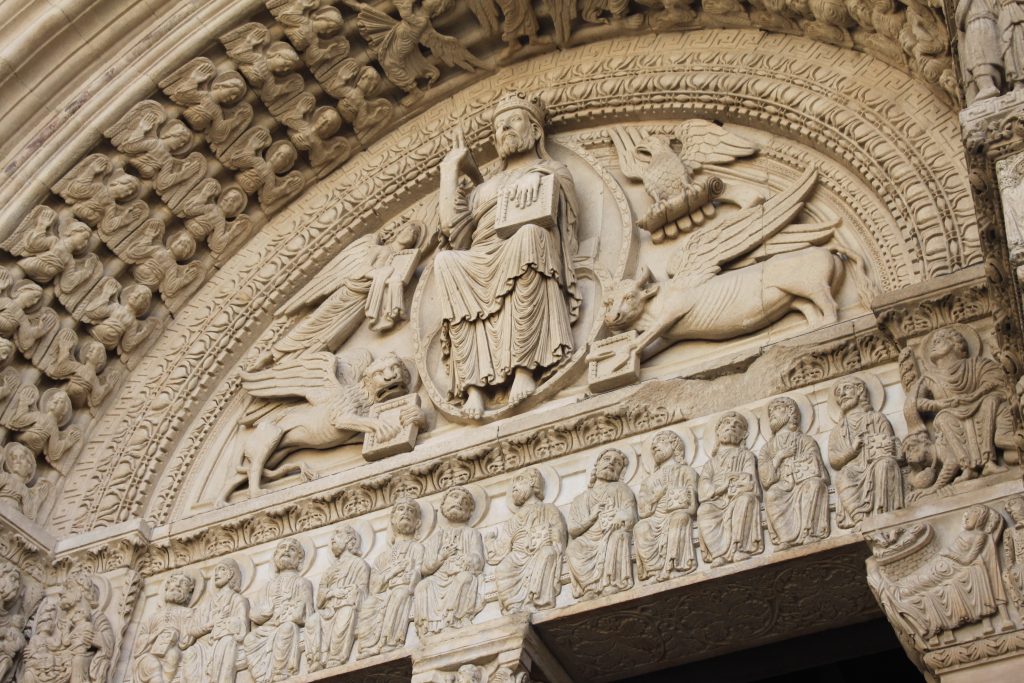
As you wander the streets of old town Arles, you’ll find vibrant cafés and boutiques housed in 17th and 18th-century buildings. Art lovers can follow in Van Gogh’s footsteps with a walking tour of sites he famously depicted or frequented.
Notable stops include Espace Van Gogh, the 16th-century hospital where he was treated after his self-inflicted injury and where he lived during periods of mania, the site of the Yellow House where he once lived, and the Place du Forum, home to the café featured in his painting Café Terrace at Night.
Just outside the city, visitors can see the Langlois Bridge, the iconic drawbridge over the Bouc Canal that Van Gogh painted multiple times in 1888.
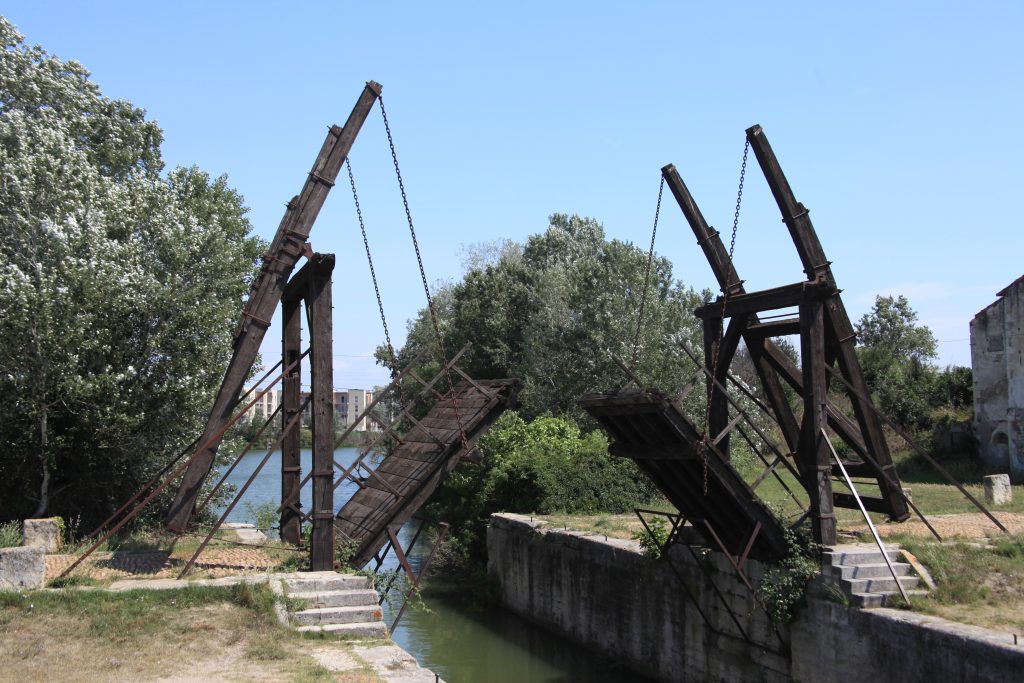
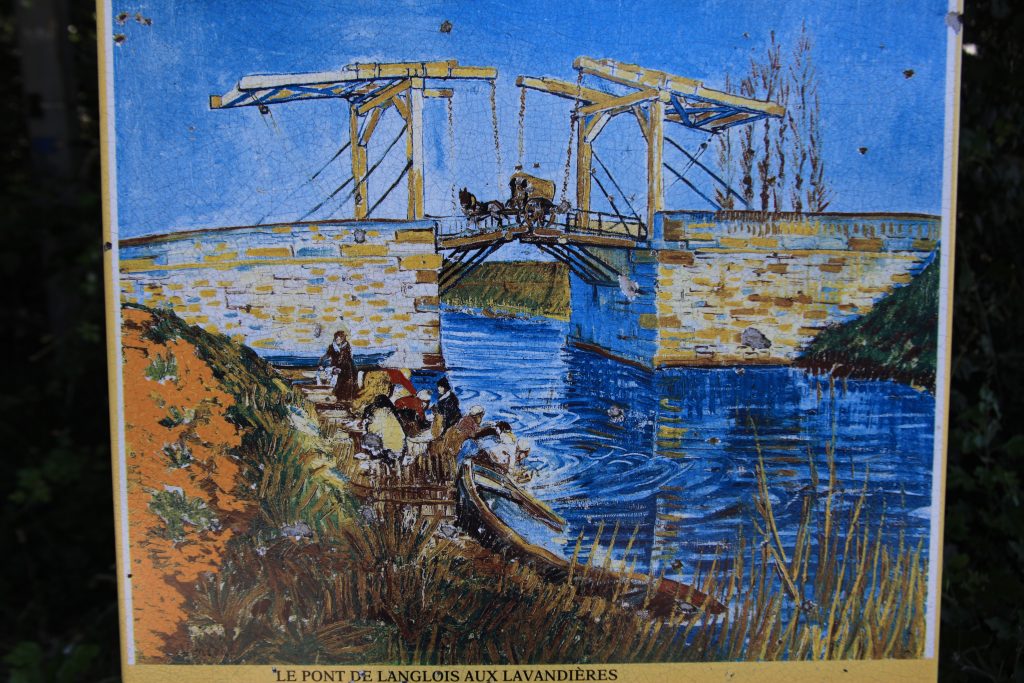
A Timeless Destination
Arles is a place where history, art, and culture converge. Whether you’re exploring its Roman past, following Van Gogh’s artistic journey, or simply enjoying the warmth of its streets and people, the city continues to leave a lasting impression—just as it did on one of history’s greatest painters.
Recommended Reading
For fiction lovers, consider Lust for Life: A Novel of Vincent Van Gogh by Irving Stone, Sunflowers by Sheramy Bundrick, Painting the Wind by Michele Dionetti, Eagle in the Snow: General Maximus and Rome’s Last Stand by Wallace Breem.
For a deeper historical and biographical perspective, explore The Letters of Vincent Van Gogh by Van Gogh: The Complete Paintings by Ingo F. Walther, Vincent and Theo: The Van Gogh Brothers by Deborah Heiligman, The Yellow House: Van Gogh, Gauguin, and Nine Turbulent Weeks in Arles by Martin Gayford, Vincent’s Arles: As It Is and as It Was by Linda Seidel, and The Rock of Arles by Richard Klein—a Roman era look at the city.
Read about Jackie Lapin on the Artsy Traveler Guest Posters page.
